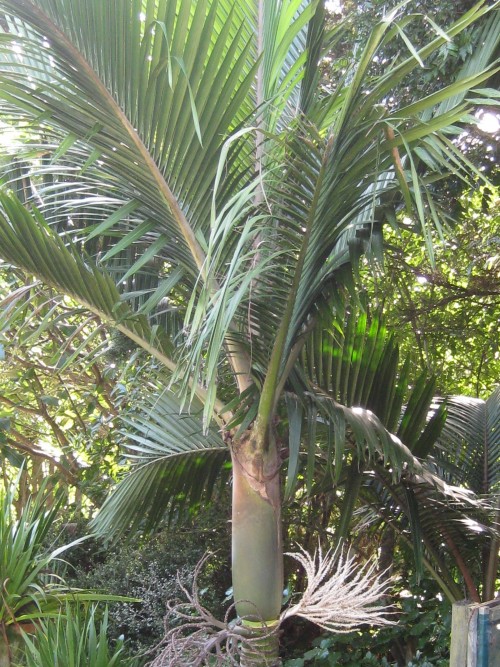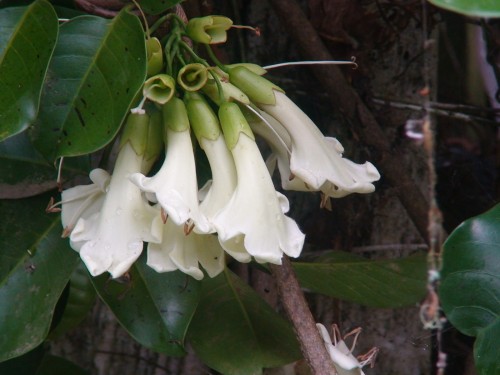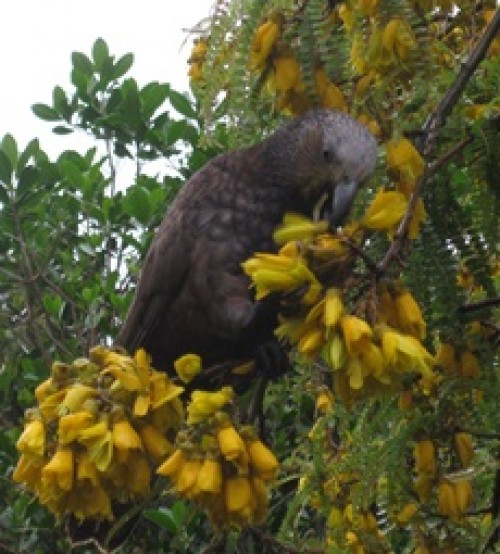No one was more surprised and disappointed than I was when I turned the pages of last month's edition of Savvy and saw the photo leading my article. Of course it wasn't flowering NZ flax.
It wasn't even a native plant. However after a few deep breaths and a calming down period I realised that it just reinforces my point about how little most Kiwis know about their own flora and how lucky I was to grow up in a household where we knew a lot about our native plants.

What a shame, that as kids, we were not taught more about native plants at school. It would have encouraged more respect for the environment and surrounds if we had known more about the importance and uniqueness of what we have. I reckon it would be a safe bet that if I walked into the mall with half a dozen leaves of the commonest NZ trees I would be lucky to find someone who could name them all.
My underlying mission as a native plant nurseryman is to promote the planting of natives. There are many reasons for including native plants in our gardens.
Gardening in NZ started when colonial settlers arrived and gardens were based on the cultural roots of their European creators.
Fashions come and go and what has been left behind in their wake are gardens of an eclectic mix of different periods in our history. Hopefully some fashions will never return, like those scoria gardens with various coloured conifers and glass rocks!
Over time we have become less associated with our colonial past and are developing as nation with our own identity. One of the most visible and obvious ways to achieve a unique Kiwi look is to use our iconic plants such as nikau, cabbage trees, lance woods and tree ferns. We are spoilt for choice. After all 85% of NZ natives are found nowhere else in the world.
You can create a garden to remind you of a favourite place, a place where you grew up, or a holiday spot. A native garden can reflect a certain part of the country. Northland has a number of plants that are only found growing here, and after all, locals know best. Plants having their origins in the north are most likely to succeed in the north with minimal care and maintenance.
New Zealand has already lost many plant species and around 60 more species face extinction if special efforts are not made to protect them. A further 165 are vulnerable and many rare species are in serious decline.
Home gardens can play an important role in ensuring the survival of these rare plants.

There are several well known cases where horticulture has rescued a species from extinction. Only one plant of Tecomanthe speciosa is known in the wild. This vine was discovered in 1945 on the Great Island of the Three Kings group north of NZ. Introduced goats were probably responsible for the fact this species is only one individual. The last goats were shot in 1946. Survival in the wild for this one plant is not certain. Tecomanthe is now an attractive and popular garden plant that grows well in the warmer parts of the North Island. Its large flowers appear to have features suited to pollination by bats.
In the controlled environment of a garden where we can keep pests away we can create refuges and protection for threatened plants. We should not underestimate the importance of our own gardens.
One of the pleasures of having a native garden is that it attracts native birds, most commonly tui and wax eyes, both nectar and berry seekers. I have often heard people say that they have planted Flame trees or Bottlebrushes because there was nothing for the birds in winter. This is just not right; I wonder what they think the birds were eating before these exotic trees were introduced. While it would be fair to say that more native plants flower and fruit in the warmer months, nature has ensured that there is food all year.
If you plant enough varieties of native trees and shrubs, a year round supply of food can be on offer for birds. The flowers of bird attracting plants are often the most spectacular: kowhai, pohutukawa, kaka beak and flax to name a few. The plight of our native insects has often been overlooked. Many NZ insects have life cycles that depend on particular native plants.
A huge range of plants is available for the home gardener and as our native plants once covered the entire country one can always find a suitable plant for any situation no matter how difficult that area might be. Finding the right plant for the right place; that is the challenge!

If you plant enough varieties of native trees and shrubs, a year round supply of food can be on offer for birds. The flowers of bird attracting plants are often the most spectacular: kowhai, pohutukawa, kaka beak and flax to name a few. The plight of our native insects has often been overlooked. Many NZ insects have life cycles that depend on particular native plants.
A huge range of plants is available for the home gardener and as our native plants once covered the entire country one can always find a suitable plant for any situation no matter how difficult that area might be. Finding the right plant for the right place; that is the challenge!
